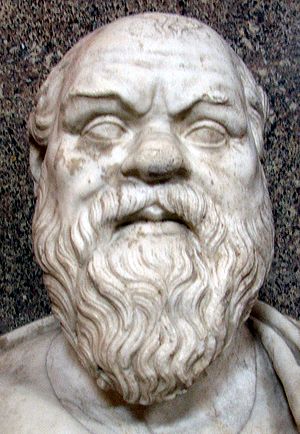How To Read a Great Book (Gorgias as Type)
Before plays had acts and novels had chapters, people still had to figure out the form of the things they read. In the ancient world, writers seem to have treated the structure of their writing as a game. They used it to hide meanings and to give the reader clues to find what was hidden.
St. Luke, for example, who was the most classical of the New Testament writers in his forms (being a doctor he had received a classical education), assembles his vignettes from the life of Christ in a series of chiastic structures (ABCD DCBA) that provide hints about the message he is delivering. Then he ends each section with a summary statement that indicates it’s time for a new “chapter.”
As a result, the act of reading was by its nature a mental workout. The idea of reading something once and saying, “I read that,” was laughable. You had to try to figure out the outline/structure of the book, and doing so both taught you how to read and compelled you to read carefully and attentively. For this reason, chapters are one of the things that have made reading so easy that we don’t learn how to read any more. Heck, we don’t even know how to teach reading anymore.
Dr. Taylor will be teaching an On-line class on how to read short stories this summer. While this post is about Plato’s Gorgias, it occurs to me that short stories are among the few forms of conventional writing that don’t usually have chapter divisions and that rely, for the readers understanding, on attention to structure. Learn how to read a short story, and you’ll be better able to read the gospels! Therefore, permit me to put in a word of encouragement to take this class with Dr. Taylor. (I suspect it’s just as true of poetry)
If you want to read a great book, you have to seek out its secrets and one of the best ways to do that is to look at its surface. Just notice the form and structure it incorporates.
Let me try to do this with Plato’s Gorgias, since I’m preparing for the apprenticeship. I don’t have to look hard, but I do have to look, to get some basic information. Please note that I’m not actually reading the text at this point, so I’m not drawing any conclusions about the specific meaning of the structure. I’m noting it; that’s all.
Now, I can’t really prevent my eyes from reading the occasional line, but I’m doing my best to withhold judgment on the weight of what I read. Experience with an author does incline one to draw conclusions, but only tentative suggestions are valid at this point. Especially with a great book.
First, and this is important, the book is 80 pages long in the source document – from 447 to 527. (42 pages in the Great Books set).
- On 447, Callicles, Chaerophon, and Socrates talk.
- On 448, Gorgias, Socrates, and Polus talk.
- From 449-461 it’s all Socrates and Gorgias.
- 461-463: Socrates and Polus, with a brief statement by Gorgias (Which is small, but significant by virtue of its presence. Practical aside: this is the kind of point you note when you read for structure, but miss if you read to get it done)
- 463-466 Gorgias and Socrates, with an extended statement by Socrates
- 466-481: An extended dialogue between Polus and Socrates
- 481-527 (the end) is an even more extended dialogue with Socrates and Callicles
That is the basic structure and enough work for one day. When I come back to the text next time, I’ll start looking for further clues. For example, I note that the story is called Gorgias, yet he hardly talks compared to Polus and Callicles. Even if later editors named this dialogue, that has to be a a meaningful fact. I want to know why that is.
Also, I notice that the section with Callicles begins and ends with longish statements (a few pages) sandwiching a long series of shorter statements and questions (questions and answers). So I ask, “Why?”
Throughout this dialogue, I’ll encounter all sorts of questions for which I won’t know the final answer. They’ll all interest me and drive me to thought. But if I ignore these surface observations, I’m quite certain I’ll miss the deeper insights the Gorgias (or any great book) is driving to lead me to.
Don’t try to read deeply. Take a close look at the surface of things and the depth will take care of itself.












